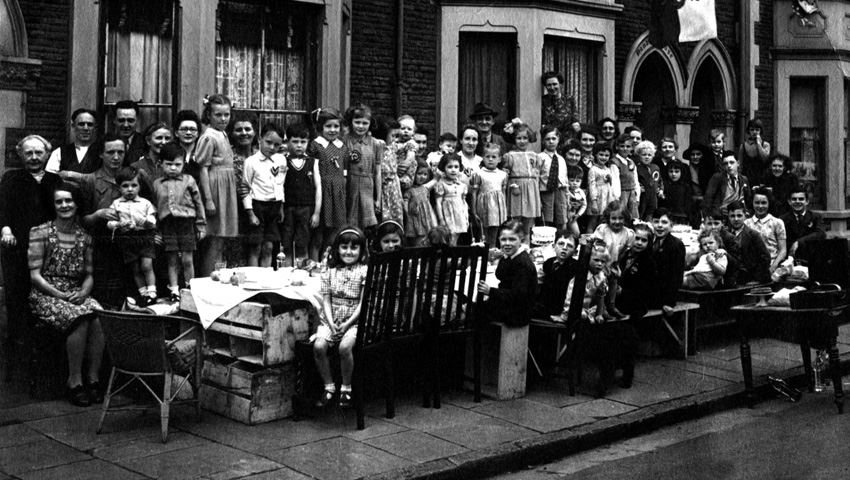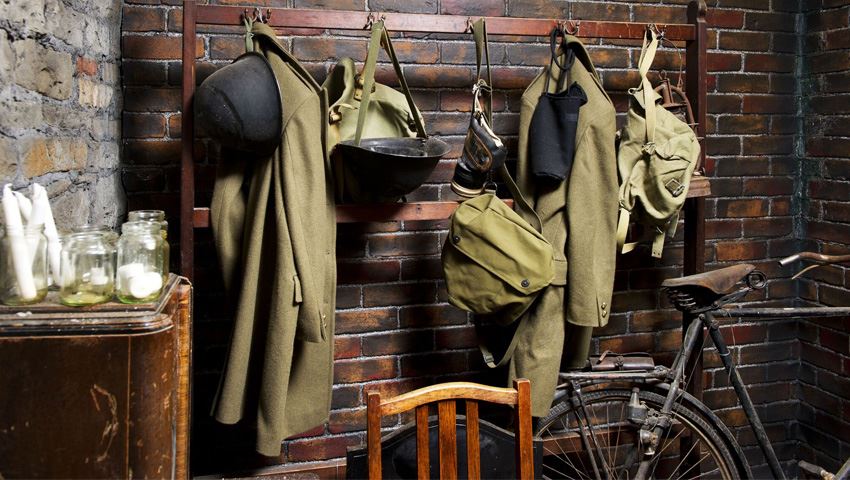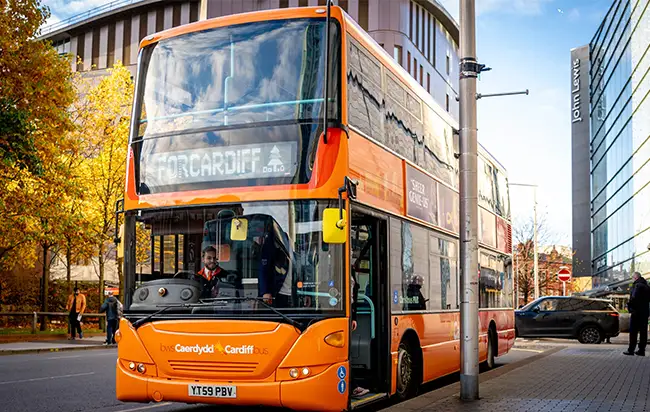What are you looking for?
CARDIFF DURING WORLD WAR 2
This year we commemorate the 75th anniversay of VE Day, Tuesday 8 May 1945, when Nazi Germany unconditionally surrendered to the Allies. After almost 6 years of fighting and millions of lives lost on both sides, the war in Europe was finally over.
Visit Cardiff have decided to take a look back at some stories of what it was like for the city and its people during the war.

Britain’s death toll during the war amounted to nearly half a million, with 384,000 military personnel killed fighting in Europe and the Pacific, and a staggering 70,000 casualties on the home front. Much of this civilian loss was due to the bombing raids of the Blitz, as the Luftwaffe targeted Britain’s major industrial towns and cities with terrifying aerial attacks, bringing the war right to people’s doorsteps.
THE CARDIFF BLITZ
Here at Visit Cardiff, if we weren’t social distancing, then we would be busy trying to encourage as many people as possible to visit our wonderful city. Today Cardiff is a vibrant and thriving capital with a beautiful regenerated waterfront, Cardiff Bay. During the war, however, Cardiff was possibly the largest coal port in the world and, as a consequence, it attracted some visitors of a wholly unwanted nature.
When France fell to the Third Reich in 1940, captured airfields gave the Luftwaffe a platform to reach further in to Britain than they had previously been able. Only a few weeks later, on the 3 July, the first bombs fell on Cardiff. The raids were repeated on many occasions until the final attack came in March 1944. While Cardiff was not as badly targeted as some other cities, it is estimated that over 2,000 bombs were dropped in total and more than 350 people lost their lives.
The worst single night of the Cardiff Blitz came during the freezing cold night of 2 January 1941. It was a clear night and the city, illuminated by a full (bombers’) moon, was a perfect target. More than 100 planes bombarded the the city over a period of 10 hours.
When the attack was finally over, 165 people had been killed with more than 400 seriously wounded and 350 homes destroyed. Llandaff Cathedral suffered extensive damage to its nave and chapel with much of the roof collapsing inwards; repairs would not be completed until almost 20 years later.
HOLLYMAN’S BAKERY
The worst hit areas during the 2 January raid were Canton, Riverside and Grangetown, as the Luftwaffe targeted the Canton railway yards. One incredibly sad story from that fateful night centred on local Grangetown bakery, Hollyman’s. When the air raid sirens sounded, the Hollyman family would kindly invite local residents to take shelter with them in the large cellar below their baker’s shop.
When 14-year-old delivery boy, John Williams, arrived for work the following morning he found a smoking ruin. The building had suffered a direct hit from a landmine, leaving an 8ft pile of rubble and killing all 32 people who were inside.

CARDIFF CASTLE
During the war years, Cardiff Castle’s walls came to play perhaps their final defensive role in its long history. When the sirens signalled an impending air raid, many citizens would shelter in their homemade Anderson or Morrison shelters but, for those people who lived or worked in the city centre, a different solution was needed.
Many of you may not be aware that there are extensive tunnels built within the reconstructed Roman walls of the Castle. The Marquess of Bute took a daily constitutional and had the tunnels created so that he could continue to enjoy his walks in the dry, even when the Welsh weather was at its worst.
But, when the bombs fell, almost 2,000 Cardiff residents could take shelter in the relative safety of these tunnels, below the layers of masonry and large earth banks. To provide quick access to the shelters, special entrances were knocked into the walls and large wooden ramps built on the outside.
BARRAGE BALLOONS
To help deter low flying Luftwaffe aircraft, a barrage balloon was flown from the Castle’s Norman keep, along with many other sites in the city. These balloons rose high above the ground but were attached by large metal cables, enemy pilots ran the risk of their planes becoming entangled and damaged if they flew too close.
These balloon sites were manned by members of the Women’s Auxilliary Air Force (WAAF), and the Castle’s crew were quartered in the converted stables that now house the Royal Welsh College of Music and Drama.
At another balloon site on Colchester Avenue, 4 members of the WAAF were sadly killed and several others badly injured when the house they were staying in took a direct hit from a bomb. The Corporal in charge, despite suffering horrific injuries herself, managed to crawl a quarter of a mile to raise the alarm and get help.

CARDIFF TODAY
Cardiff may be a far more peaceful place now but there are still reminders of those wartime experiences, if you know where to look.
On the city’s Victorian terraced streets today, you will sometimes find a curious mixture of old and new buildings. How many of us realise that these new buildings often mark the sites of damaged or destroyed houses, demolished after the Cardiff Blitz.
On a certain railway bridge in Lansdowne Avenue there are several holes in the ironwork, which are reputed to be the result of a Nazi pilot strafing a stationary train on the railway line. You can see the holes for yourself using Google Maps, here. Little did the pilot know that this was a fully loaded ammunition train on its way to the docks; had he managed to hit it then the area might look very different today.
Outside Fitzalan School, at the end of Lawrenny Avenue, is a small roundabout with a curious concrete bollard perched in the centre. The bollard is actually one of the anchors that was used to tie down a barrage balloon during the war.
Do you have any stories, or even memories of Cardiff during the war? If so, then we would love to hear them. Contact us or get in touch via social media @visitcardiff






